HP HPE7-A07 Aruba Certified Campus Access Mobility Expert Written Exam Online Training
HP HPE7-A07 Online Training
The questions for HPE7-A07 were last updated at Dec 17,2025.
- Exam Code: HPE7-A07
- Exam Name: Aruba Certified Campus Access Mobility Expert Written Exam
- Certification Provider: HP
- Latest update: Dec 17,2025
Exhibit.
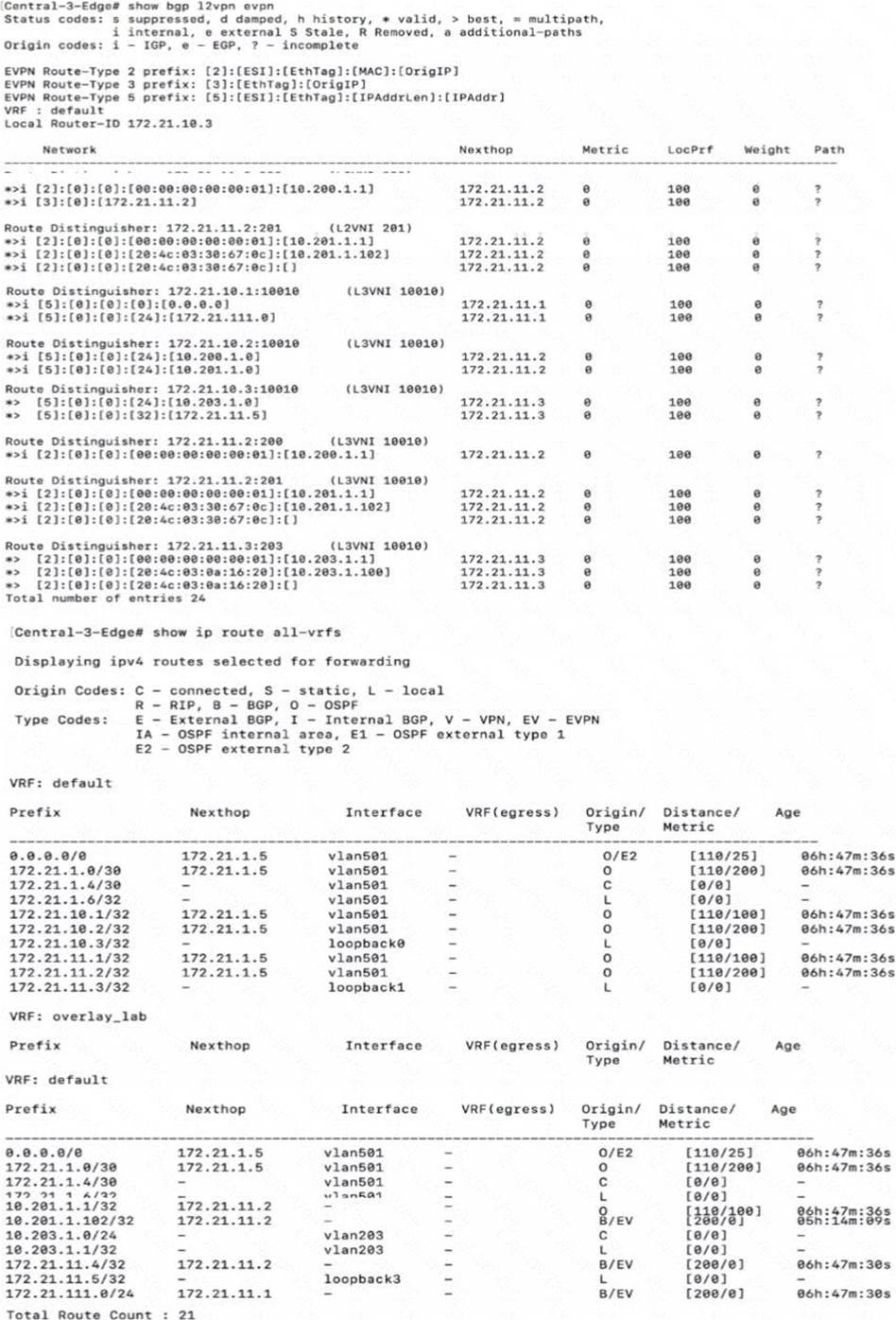
Which statement is true given the following CLI output from a CX 6300?
- A . There are no active fabric clients on the CX switch with RD 172.16.10.1
- B . A wired client with IP address 10.203 1.100 is on a remote CX 6300 in the fabric with loopback IP address 172.21.11.2.
- C . A wired client with IP address 10 203 1 100 has a host route that is not being properly advertised
- D . The overlay loopbacK addresses are advertised in the faerie with 2d-bit subnet masks
Your customer asked for help to apply an ACL for wireless guest users with the following criteria:
• Wi-Fi guests are on VLAN 555
• allow internet access
• only allow access to public DNS servers
• deny access to all internal networks except for any DHCP server
These session ACLs are already present in the CLI of the mobility gateway group:
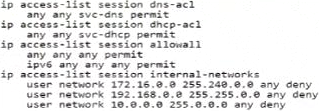
You have access to the CLl.
Which user role meets all the criteria?
A)

B)

C)

D)

- A . Option A
- B . Option B
- C . Option C
- D . Option D
Refer to the CLI output below:

What statement about the output above is correct?
- A . The port-access role was configured with gateway-role visitor
- B . The secondary tunnel endpoint IP is 10.10-10.151.
- C . The client authenticated using dot1x.
- D . The UBT zone was configured to use a user-defined VRF
A Windows device attempts to connect to an 802.1X network but it is not receiving the correct role. TEAP has been configured asthe only authentication method in ClearPass.
The wireless configuration is correct.
Exhibit.
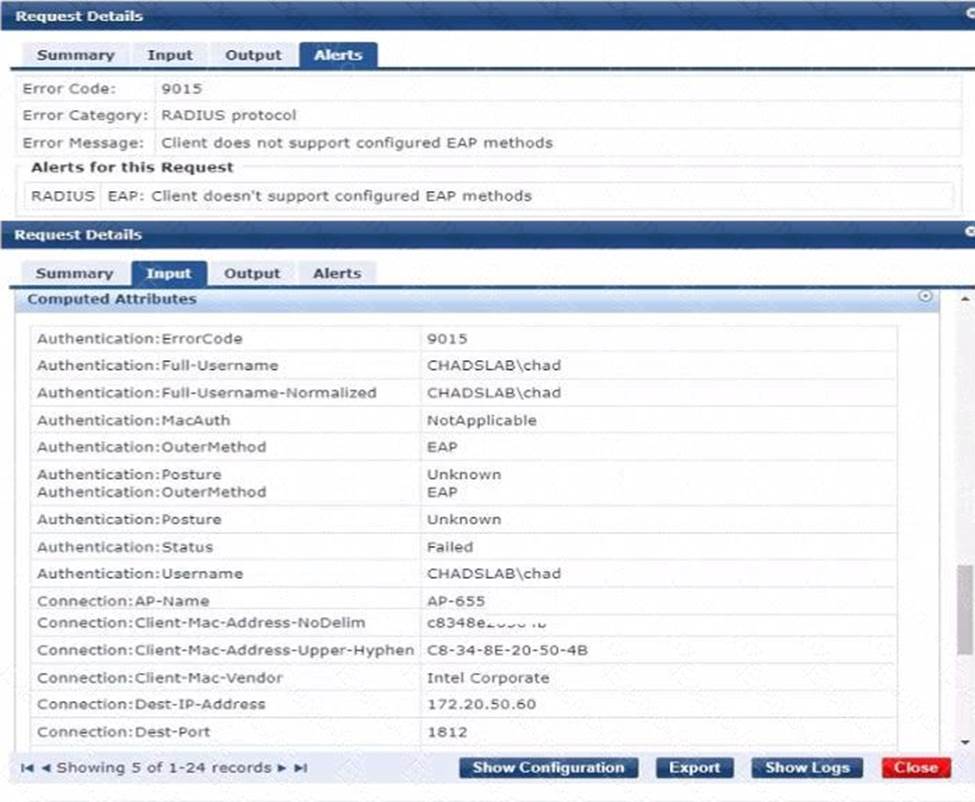
What is me mostlikelycause?
- A . The Windows device needs 10 De configured tor TEAP.
- B . ClearPass requires a second authentication method.
- C . 802.1X is not compatible with TEAP in windows device
- D . Only machine authentication should be configured on the Windows device
Exhibit.
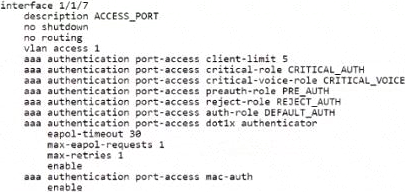
Which user role will be assigned when a voice client tries to connect for the first time, but the RADIUS server is unavailable?
- A . CRITICAl_AUTH
- B . DEFAULT_AUTH
- C . CRIT1CAL_V0ICE
- D . PRE_AUTH
A customer is evaluating device profiles on a CX 6300 switch.
The test device has the following attribute:

• MAC address=81:cd:93:13:ab:31
The test device needs to be assigned the "lot-prod” role, in addition the "lot-default" role must be applied for any other device connected lo interface 1/1/1. This is a lab environment with no configuration of any external authentication server for the test.
Given the configuration example, what is required to meet this testing requirement?
- A . Enter the command "pot-access device-profile mode block-until-profile-applied"" for interface 1/1/1.
- B . Enter the command "port-access fallback-role lot-default globally
- C . Enter the command "port-access onboarding-method precedence" to set device profiles with a lower precedence.
- D . Enter the command "port-access device-profile mode block-until-profile-applied" globally.
What is me recommended configuration to ensure link aggregation is consistent in a campus topology using VSX with two aggregation switches and downlinks to access switches?
- A . Use a custom LACP hash algorithm for improved load Balancing.
- B . Keep the MTU values at the default setting for GRE and VXLAN communications
- C . Use the command "vsx-sync mclag-interfaces" under the VSX context.
- D . Use the command "vsx-sync active-gateways" under the VSX context.
A customer has interfering devices that are seen over the air. They contact you and ask you to configure RAPIDS to help identify interfering and rogue APs. HPE Aruba Networking Central identifies a rogue AP and displays the connected switch port.
How can HPE Aruba Networking Central identify which switch port the AP is connected to?
- A . device profiting on the switch
- B . from the AP MAC address table
- C . from the switch LLDP neighbors table
- D . from the switch MAC address table
A deployment using AP-635S is connected to a stack of CX 6300s as shown.
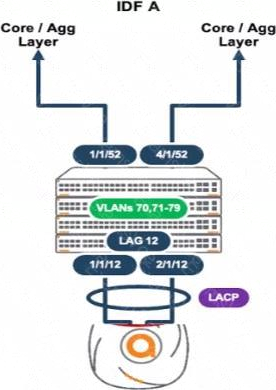
The output of the snow LACPinterfaces shews the following:

What is causing this issue?
- A . e0 is connected to a smart rate interface, and e1 is connected to a non-smart rate interface.
- B . Spanning tree and loop protect are enabled on both AP uplink ports.
- C . Each AP interface is connected to a routed-only interlace on different networks
- D . The AP is configured with LACP active
Exhibit.
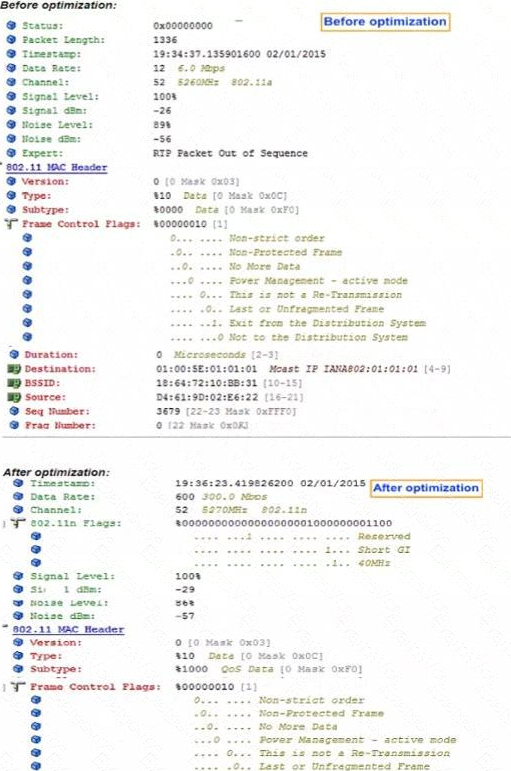
A network administrator attempts to improve multicast traffic flow and performs some packet captures for validation.
What can the network administrator conclude from the results?
- A . The data rate increased from 6 Mops to 300 Mops because Broadcast Multicast optimization (BCMCO) was configured.
- B . The capture taken after optimization does not show a packet length because Multicast Transmission Optimization was configured.
- C . The type flew remains consistent because Dynamic Multicast Optimization (DMO) was configured.
- D . The data rate increased from 6 Mbps to 300 Mops because Dynamic Multicast Optimization (DMO) was configured.
Latest HPE7-A07 Dumps Valid Version with 70 Q&As
Latest And Valid Q&A | Instant Download | Once Fail, Full Refund

